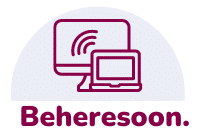
What are the key strategies for using big data in UK's public transportation planning?
In the modern era, big data has revolutionized various industries, and public transportation is no exception. In the UK, leveraging big data has become critical for efficient transportation planning and improving mobility services. The analysis of vast amounts of data from multiple sources, including mobile phones and autonomous vehicles, has enabled a more profound understanding of travel behavior and traffic management. In this article, we explore the key strategies for using big data in the UK's public transportation planning, ensuring better traffic flow, reduced travel time, and enhanced public transport services.
Harnessing Real-Time Data for Traffic Analysis
Real-time data collection is a cornerstone of modern traffic analysis. With the advent of mobile phones and autonomous vehicles, the amount of data available has increased exponentially. This big data can be used to track and analyze traffic flow in real time, providing valuable insights into transportation planning.
A découvrir également : How can UK-based logistics companies use AI to automate inventory management?
Using real-time data, traffic management systems can adapt to changing conditions on the fly. For instance, traffic lights can be adjusted based on current congestion levels, reducing delays and improving the overall flow of vehicles. Moreover, public transit services can utilize this data to optimize routes and schedules, ensuring that buses and trains run more efficiently.
Google and other tech giants have developed sophisticated algorithms to process this data quickly and accurately. Tools like Google Scholar can provide access to a wealth of research on traffic analysis and big data applications, allowing transportation planners to stay up to date with the latest developments.
A lire aussi : How can UK charities use big data to enhance fundraising campaigns?
The benefits of real-time data analysis are clear. By monitoring traffic conditions as they happen, authorities can respond more effectively to incidents, reducing the impact on commuters. This proactive approach not only improves the efficiency of the transport system but also enhances the overall travel experience for the public.
Enhancing Public Transport Services with Big Data
Public transport is a vital component of the UK's transportation network. However, to keep up with the growing travel demand, it is essential to leverage big data for better service planning and delivery.
One of the key strategies is the use of origin-destination data to understand the movement patterns of passengers. This data can be collected from various sources, such as ticketing systems and mobile phones. By analyzing this information, transport authorities can identify high-demand routes and times, allowing them to allocate resources more effectively.
Another critical application of big data in public transport is the optimization of schedules. By analyzing historical travel time data, planners can develop more accurate timetables that reflect actual passenger needs. This can help reduce waiting times and improve the overall reliability of public transport services.
Machine learning models also play a significant role in enhancing public transport. These models can predict demand patterns and identify potential issues before they arise. For example, if a model predicts a surge in passenger numbers on a particular bus route, additional buses can be deployed to accommodate the increased demand.
Furthermore, big data can be used to improve the accessibility of public transport. By analyzing data on passenger demographics and travel behavior, authorities can identify underserved areas and develop targeted strategies to enhance service provision.
Improving Transportation Planning with Predictive Models
Predictive models are an essential tool in the realm of transportation planning. By leveraging big data, these models can forecast future trends and inform decision-making processes.
One of the key applications of predictive models is in travel demand forecasting. By analyzing historical data on travel patterns, these models can predict future demand for different modes of transportation. This information is invaluable for planning new infrastructure projects and optimizing existing services.
Predictive models can also be used to assess the impact of potential changes to the transport system. For example, if a new public transit line is proposed, a predictive model can estimate its effect on traffic flow and passenger numbers. This allows planners to make more informed decisions and avoid costly mistakes.
Autonomous vehicles are another area where predictive models have significant potential. By analyzing data from these vehicles, models can predict traffic patterns and identify potential bottlenecks. This information can be used to develop adaptive traffic management strategies that improve the overall efficiency of the transport system.
Moreover, predictive models can help identify areas where interventions are needed most. For instance, if a model predicts a high likelihood of congestion in a particular area, targeted measures can be implemented to alleviate the problem. This proactive approach ensures that resources are used more effectively and that the transport system operates smoothly.
Leveraging Mobile Phone Data for Travel Behavior Analysis
Mobile phone data is a goldmine of information for understanding travel behavior. By analyzing this data, transportation planners can gain valuable insights into how people move around the city and identify areas for improvement.
One of the key advantages of mobile phone data is its granularity. Unlike traditional surveys, which provide a snapshot of travel behavior at a specific point in time, mobile phone data offers a continuous stream of information. This allows for a more detailed and accurate analysis of travel patterns.
By mapping the movement of mobile phones across the city, planners can identify hotspots of activity and potential bottlenecks. This information is invaluable for optimizing traffic flow and ensuring that public transport services are well-aligned with passenger needs.
Mobile phone data can also be used to analyze the impact of special events on travel behavior. For instance, if a major concert is taking place in the city, planners can use mobile phone data to predict the surge in passenger numbers and adjust public transport services accordingly. This ensures that the system can handle the increased demand and minimizes disruptions for regular commuters.
Furthermore, mobile phone data can be used to assess the effectiveness of transport interventions. By comparing travel patterns before and after a change, planners can determine whether the intervention has had the desired effect and make necessary adjustments. This data-driven approach ensures that transport strategies are continually refined and improved.
Integrating Big Data into a Comprehensive Transport Strategy
To fully harness the potential of big data, it is essential to integrate it into a comprehensive transport strategy. This involves not only collecting and analyzing data but also using it to inform decision-making processes and guide long-term planning.
One of the key components of this strategy is the development of a centralized data system. This system should collect data from multiple sources, such as traffic cameras, mobile phones, and public transit systems, and store it in a unified database. This ensures that all relevant data is easily accessible and can be used to inform planning decisions.
Another important aspect is the development of data-sharing agreements with private companies. Many tech firms, such as Google, collect vast amounts of data on travel patterns. By partnering with these companies, transportation authorities can gain access to valuable data that can be used to enhance public transport services and improve traffic management.
Collaboration with academic institutions is also crucial. Universities and research organizations often have expertise in data analysis and machine learning, and can provide valuable insights and support for transportation planning. Platforms like Google Scholar can facilitate access to the latest research and foster collaboration between academia and industry.
Finally, it is important to ensure that data-driven strategies are continually refined and updated. The transportation landscape is constantly changing, and what works today may not be effective tomorrow. By regularly reviewing and updating data-driven strategies, transportation authorities can ensure that they remain responsive to changing conditions and continue to meet the needs of the public.
In conclusion, leveraging big data is essential for effective public transportation planning in the UK. By harnessing real-time data, enhancing public transport services, utilizing predictive models, analyzing mobile phone data, and integrating these elements into a comprehensive transport strategy, authorities can improve traffic management, reduce travel time, and ensure that public transport services meet the growing travel demand. The future of transportation planning lies in the intelligent use of big data, and by adopting these strategies, the UK can create a more efficient and responsive transport system for all.
